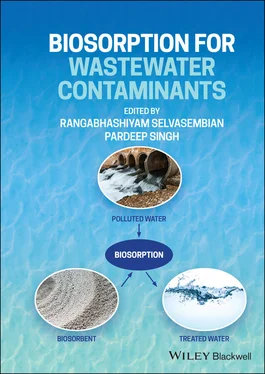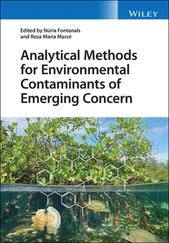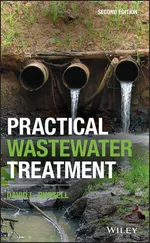The book comprises 14 chapters contributed by various experts in the field. Each chapter is edited carefully to provide the required information for a thorough understanding of different aspects of biosorption technology. I congratulate the editors and other contributors of this book for providing us with a complete guide to biosorption for the welfare of the research community.
Dr. K. Vijayaraghavan
Senior Scientist
Department of Civil and Environmental Engineering
National University of Singapore, Singapore
1 Industrial Wastewater Contaminants and Their Hazardous Impacts
Camila Pesci Pereira1, João Pedro Neves Goldenstein2, and João Paulo Bassin1,2
1 Chemical Engineering Program, COPPE, Federal University of Rio de Janeiro, Rio de Janeiro, Brazil
2 Civil Engineering Program, COPPE, Federal University of Rio de Janeiro, Rio de Janeiro, Brazil
AOP:Advanced oxidation processASW:Artificial sweetenerBIT:BenzisothiazolinoneBOD:Biochemical oxygen demandBPA:Bisphenol ABPD:Biocidal Products DirectiveCD:CarbendazimCEC:Contaminant of emerging concernCO:Carbon monoxideCOD:Chemical oxygen demandDBD:Dielectric barrier dischargeDCOIT:DichloroctylisothiazolinoneDDT:DichlorodiphenyltrichloroethaneDEET:N, N‐Diethyl‐meta‐toluamideDR:DiuronEDC:Endocrine disrupting compoundEPA:US Environmental Protection AgencyFR:Flame retardantHCB:HexachlorobenzeneIARC:International Agency for Research on CancerIPBC:IodocarbIP:IsoproturonIRG:Cybutryn, Irgarol 1051MBR:Membrane bioreactorMCI:Methyl chloroisothiazolinoneMCPP:MecopropMI:MethylisothiazolinoneNOx:Nitrogen oxidesOIT:OctylisothiazolonePAH:Polycyclic aromatic hydrocarbonPBB:Polybrominated biphenylPCB:Polychlorinated biphenylPCP:PentachlorophenolPeCB:PentachlorobenzenePFOS:Perfluorooctanesulfonic acidPOP:Persistent organic pollutantPPCPs:Pharmaceutical and personal care productsPPZ:PropiconazolePT:Product typeSBR:Sequencing batch reactorSVOC:Semi volatile organic compoundTB:TerbutrynTBU:TebuconazoleTOC:Total organic carbonTOD:Total oxygen demandVOC:Volatile organic compoundVVOC:Very volatile organic compoundWWTP:Wastewater treatment plant
Industrial and technological development and population growth have provided countless advances in society and improved quality of life. However, the increase in production and consumption capacity also negatively impacts the planet due to emission of harmful gases and the increasing production and consequent disposal of solid wastes and wastewaters from domestic and industrial sources. The volume and concentration of contaminants present in waste streams depend on several factors such as population density, level of technological development in the country or region, climate, seasonality, etc.
Contamination of water and soil by industrial waste is a global concern. For most industries, providing access to clean, affordable water is one of the biggest challenges. In addition, industrial wastewater contains several polluting compounds (Hashemi et al., 2018; Barak et al., 2020). Thus, there is a need to establish the management of and industrial wastewaters based on strict environmental protocols, with the objective of eliminating these contaminants from the environment as much as possible. As a result, through the use of recent technologies, research has been carried out to provide intelligent solutions not only from an environmental point of view but also from an economic standpoint. Therefore, several technologies based on physical, chemical, and biological methods are investigated (Hashemi et al., 2018).
This chapter describes some of the contaminants present in industrial wastewaters, their environmental impacts, and their risks to human health. In addition, the efforts made to evaluate and define the best ways to control their dissemination in the environment are presented, as well as the treatment processes used and studied for eliminating contaminants.
Heavy metals are a classic group of metallic elements that cannot be overlooked as industrial wastewater contaminants due to their toxicity. According to the World Health Organization (WHO), some of these pollutants (e.g. arsenic, lead, mercury, and cadmium) are included in the top 10 issues of primary concern (air pollution, arsenic, asbestos, benzene, cadmium, dioxin and dioxin‐like substances, inadequate or excess fluoride, lead, mercury, and highly hazardous pesticides) because they are widely spread worldwide, they are highly hazardous, and negatively affect human health and natural ecosystems (WHO, 2020). Moreover, such substances are significantly dense and persistent and have shown toxicity even at part per billion (ppb) levels (Yadav et al., 2019). Compared to other contaminants, heavy metals can be neither degraded nor destroyed and can easily accumulate along the food chain. This phenomenon, known as bioaccumulation , increases the concern about suitable methods to treat industrial wastewaters.
Heavy metals are natural constituents of the Earth's crust, and heavy metal contamination in the environment results from natural and anthropogenic sources. Human activities are the leading causes of pollution. First, these metals are found in the form of chemical compounds or elemental state in rocks as ore deposits, which are explored through mining techniques. Environmental contamination by these compounds is not only a result of the business of mining – the largest contributor to heavy metal pollution – but may also be caused by improperly treated industrial wastewaters that reach natural ecosystems. The most common heavy metals found in industrial wastewaters are lead, cadmium, mercury, arsenic, copper, zinc, nickel, and chromium, which come from the paint, mining, metal manufacturing (electroplating, smelting, finishing, etc.), and textile industries (Akpor et al., 2014). From natural sources, the main contributions come from volcanic activity, soil erosion, and run‐off. These hazardous waters deteriorate aquatic systems and terrestrial environments and retard biota growth (i.e., seed germination, chlorophyll production, and enzyme activity), with reported cases of carcinogenic, teratogenic, mutagenic, and neurotoxic effects.
There are multiple criteria to define an element as a heavy metal; however, one of the most frequently adopted classifications is based on the element's density. Some authors define heavy metals as metals with a density greater than 4 g/cm 3, while others say that the density needs to be greater than 7 g/cm 3, or five times denser than water. Clearly, there is no consistency in the literature (Duffus, 2002).
Regardless of the definition, the term heavy metals is considered inadequate and obsolete, since the majority of the population misuse and misunderstand it and the term sometimes leads to confused policies and regulations. In this chapter and most discussions, such as the WHO's list, when people refer to heavy metals , they relate heaviness to toxicity and are actually referring exclusively to toxic metallic elements. However, in appropriate concentrations, some of these elements are vital in our daily diets, such as calcium, iron, magnesium, and zinc. Their roles are very diverse. Calcium is the primary constituent of human bones and teeth, providing structure and hardness, but it also is necessary for muscles, metabolism, and nerve responses, together with magnesium and zinc. While iron and magnesium are essential for blood production, especially hemoglobin and myoglobin, zinc supports the human immune system and male reproductive activity, and magnesium also aids in muscle recovery and sleep. Signs of illness (diarrhea, anemia, liver and kidney failure, bloody urine, vomiting) have been reported when inadequate zinc concentrations are present, which can lead to a misdiagnosis of lead poisoning (Duruibe et al., 2007). Since the main concern is not the vital concentrations of heavy metals in humans, it was decided to name this section of the chapter “Toxic Heavy Metals” to avoid any room for misinterpretation.
Читать дальше












